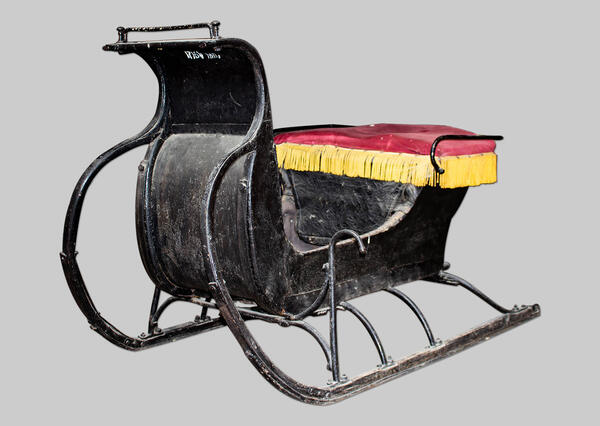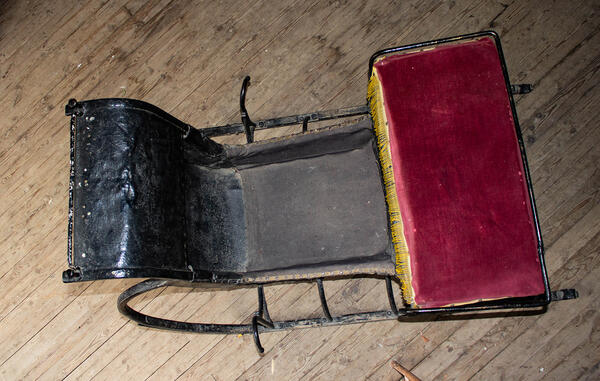A sledge is the first animal-drawn transport known to humans. The earliest sleds appeared before the wheel and were used as early as 8 through 6 millennia BC, and almost at all latitudes, even in snowless subtropics. Researchers believe that the word ‘sani’ comes from the Old Slavonic ‘san, ’ which means ‘snake’: two sleds of a winter carriage sliding in the snow reminded our ancestors of snakes crawling side by side.
The names of the sledge on display in the museum varied. Some people used the term ‘egoist’ to indicate that one could only travel solo (sometimes without a coachman). Some referred to them as ‘shchegolki’ (for dandies), implying that only carefree young people move around on them. Others called them ‘sleds for trips’.
Such a design of sledges was created by the early 19th century. The first copies were imported to Russia from Europe and were very expensive. Eventually, Russian masters learned not only to copy the work of foreign origin, but also to launch their own production, introducing various improvements.
The names of the sledge on display in the museum varied. Some people used the term ‘egoist’ to indicate that one could only travel solo (sometimes without a coachman). Some referred to them as ‘shchegolki’ (for dandies), implying that only carefree young people move around on them. Others called them ‘sleds for trips’.
Such a design of sledges was created by the early 19th century. The first copies were imported to Russia from Europe and were very expensive. Eventually, Russian masters learned not only to copy the work of foreign origin, but also to launch their own production, introducing various improvements.




